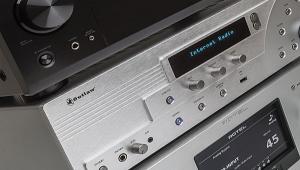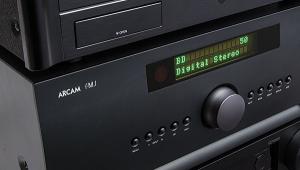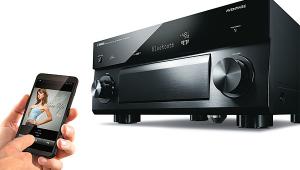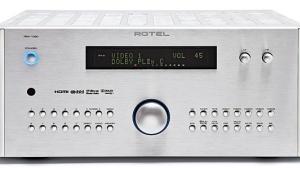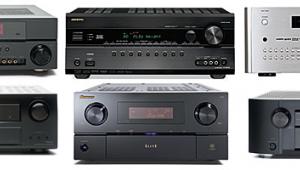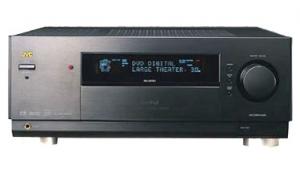HT Guide to AV Receivers Page 2
THX-certified A/V receivers have enough power to drive THX-certified speakers to reference level in rooms of specific sizes. These A/V receivers also feature a THX Cinema mode, which includes, among other things, a Re-EQ circuit to tame overly bright movie soundtracks. THX had a hand in developing the 7.1-channel (EX) version of Dolby Digital, but most of its functions act as an overlay with existing surround codecs. THX is primarily beneficial in the context of a full THX-certified system. In other words, with a certified AVR and certified speakers, you’ll get the full benefits of compatibility and integration.
Dolby and DTS Surround Decoding
Surround sound is, at its best, an discrete encode/decode process (a.k.a. codec). It is encoded into software and decoded in the home by hardware, with no fakery or channels derived from other channels. These Dolby and DTS formats are the bedrock technologies of home theater. Let’s discuss them in descending order of quality and newness.

Dolby TrueHD, DTS-HD Master Audio
These formats offer far more efficient data storage than uncompressed PCM. They reconstruct the soundtrack master bit for bit on playback. You receive precisely what the engineer encoded. Blu-ray fans will want these codecs in either their players or their A/V receivers. If the AVR can receive a high-resolution PCM signal via HDMI, it doesn’t need onboard lossless decoding if the player it’s connected to does. In fact, it’s arguably better to let the player decode these formats because decoding in the AVR prevents you from hearing the so-called secondary audio, such as the audio from commentaries or Bonus View PiP windows that you access during the main Blu-ray program.
Dolby Digital Plus, DTS-HD High Resolution Audio
These are called lossy compression formats because they omit some data in the encode/decode process that is not retrieved on playback. But they do it more cunningly (and sometimes at higher data rates) than old-style Dolby Digital 5.1 and DTS, which potentially produces a cleaner and finer-grained sound. They are relatively rare in U.S. disc formats, but they may have future applications in bit-starved online media.
Dolby EX, DTS-ES Discrete/Matrix
These are the back-surround-enhanced versions of Dolby Digital 5.1 and DTS. Dolby EX is a 6.1-channel format, although it typically splits the single back-surround channel between two back-surround speakers. It decodes the back-surround channel from the surround channels, which makes it less than a fully discrete-channel codec. DTS-ES Matrix operates in a similar fashion, although DTS-ES Discrete encodes a discrete back-surround channel. These codecs are used in some DVD and Blu-ray releases.
Dolby Digital 5.1, DTS
These are the basic, lossy compression codecs used in DTV broadcasting, virtually all DVD releases, and some Blu-ray Discs. Introduced in the mid ’90s, they improved over the matrix-encoded analog Dolby Surround of previous decades. They digitally encode each channel as a discrete, independent entity, using perceptual coding that selectively omits data that’s considered to be least significant or masked by other sounds.
Matrix Decoding and Surround Expansion Modes
These modes may operate on surround-encoded signals as well as adapt, modify, and derive effects from signals encoded as stereo, all the way up to 5.1 channels.
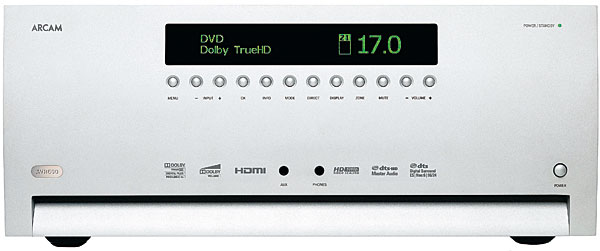
Dolby Pro Logic IIx and IIz
This is partly a surround decoding mode (operating on analog Dolby Surround signals encoded into two-channel soundtracks) and partly a surround expansion mode for any two-channel signal source. It includes separate submodes for movies, music, games, and a rarely used emulation mode that mimics the original Dolby Pro Logic. The DPLII Music mode is a credible way to adapt two-channel sources to 5.1 channels while maintaining the original stereo mix’s feel. It will not be preferable to pure stereo to all listeners. Its 7.1-channel version (with back surrounds) is Dolby Pro Logic IIx, which can derive 7.1 channels from 5.1-channel sources. Its up-to-9.1-channel version (with back surrounds and height channels) is Dolby Pro Logic IIz.
DTS Neo:6, Circle Surround, Neural Surround
These are all competitors to the DPLII family. They expand stereo sources to surround using a variety of approaches.
Generic DSP Modes
Labeled Hall, Stadium, etc., these listening modes are dispensable for most users and may be confusing to the unwary. If you like them, by all means use them, but these modes seldom add any genuine realism. When you use them indiscriminately, they might give you the impression that your system sounds disgusting.
Amplifier Basics: 5.1 or 7.1?
Despite the debut of height- and width-augmented listening modes and the perhaps superfluous pervasiveness of back-surround hardware and software, you don’t need to use all seven channels in an average A/V receiver. You can just turn the last two channels off in the control menu and enjoy the extra dynamics from the other five channels. In some models, you can repurpose the back-surround amp channels to biamplify the front left/right speakers or to power a second zone.
Beware of Power Specs
Spec sheets are fraught with fraud, hype, and confusion. They’re especially misleading when only one or two channels are driven at a time to produce published numbers that look better than they actually are. Look for the phrase “all channels driven” when you compare power specifications. The input that’s used to produce the published numbers may be full range or just a middling 1 kilohertz. The test signal’s duration can also make a huge difference in the specified power output. The toughest challenge by far is continuous test tones, which we use on our test bench. Many manufacturers argue that program material doesn’t contain continuous tones on all channels simultaneously, so they sometimes use burst signals that have durations of milliseconds as a more real-world test. Unfortunately, there are many versions of these measurements, often referred to as peak or dynamic power, which make comparisons fairly meaningless. Small differences in total harmonic distortion (THD) may not be audible, so even though manufacturers like to tout this number, most products on the market are fine in this regard. Our best advice is to read HT’s test reports to see how much power products really deliver.
How Much Amp Power Do You Need?
To ensure a good match between your A/V receiver and speakers, check out the speaker specs for recommended amp power and nominal impedance. Speakers that have a nominal impedance of 6 ohms or less present a more challenging load than 8-ohm speakers since they require more current from the AVR. This often means the AVR will run hotter. The number of watts specified is almost always higher into 4 ohms than into 8 ohms, but your speakers may not truly be nominal 4-ohm loads, regardless of how they’re marketed. Be warned that impedance varies with frequency. It’s a moving target, and a speaker’s specified nominal impedance may not tell the whole story. The goal with amplifier power is for your system to play as loudly as you like in your room without sounding strained or distorted. You should factor in the size of your listening room, the listening distance, and the sensitivity of your speakers. This is where THX certification, the speaker manufacturer’s recommendations, and a trusted retailer can be of great help.
- Log in or register to post comments
